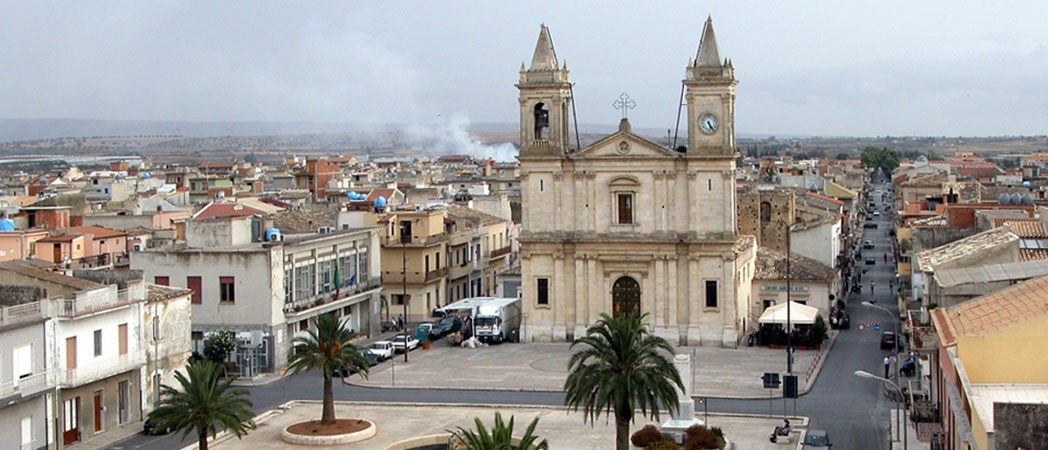
A stone's throw from the city and famous places, small treasures are hidden to be discovered, just 34 km from Ragusa, in Sicily, there are lesser known yet as fascinating villages as acate.
The story of Acate, an ancient Casale Odogrillo
acate rises on the edge of Victory plain, at 199 m. high, on the banks of the Dirillo river: just 13 km away is the Marina di Acate, a beautiful coastal stretch between the mouth of the same Dirillo river e Scoglitti.
The name acate has dubious origins and still discussed today: there are those who think it is linked to purchases, term used by the ancient Romans to name the stones taken along the banks of the river Say it. Furthermore, at that time we must not forget that, in the valley floor, there was the ancient Roman city of Bidis, whose remains were found in the current area of Poggio Bidine. Another theory instead wants that the name Acate derives from the character of theAeneid named Acate, whose body would have been buried right on the banks of the Dirillo.
Whatever the origin of the name, acate it arose on a territory inhabited by man since the time of the Siculi, followed by the Greeks, the Romans, the Byzantines, up to the Normans and the Aragonese. Originally, however, it was a simple Casale in name Woodland Cricket and had Saracen origins: the remains of the ancient walls are still visible today.
The Casale later became part of Chiaramonte and was renamed Biscari (the same inhabitants of Acate, still today, call their town Vikings): a moment of strong decline followed for the inhabited center, both because it was not very populated, and because the health conditions of the few citizens present were precarious, in the light of the healthy swamp that surrounded the town.
Only with the Castello family did the ancient Biscari emerge from its shadow cone, developing around the Castle founded in 1494 by Guglielmo Raimondo Castello, a baron who wanted the construction of the fortress on the remains of a pre-existing building.
The Massacre of Biscari during the Second World War
The rebirth of ancient Biscari, thanks to the Castello dynasty, was long and the center became very important above all from an agricultural point of view: the same historian Fazello even came to define it, in 1555, as a fortified centre.
As was the case throughout the Val di Noto, the year 1693 was tragic for acate: a devastating earthquake razed the town to the ground, which however was rebuilt over time remaining faithful to the original structure and the same Mother Church and Castle they were refurbished, still today symbols of this village in the Ragusa area.
In 1824 Biscari became a free municipality and assumed the new name of Acate. The 900s will be remembered as a sad century for Acate, which became the scene of one of the bloodiest pages in its history. Indeed, here the soldiers of the United States of America, who landed in Sicily in 1943, killed as many as 76 prisoners, despite these having surrendered: this event has gone down in history as Massacre of Biscari and among the victims there was also a certain Carl Ludwig Long, German athlete who won the silver medal in the 1936 Berlin Olympicsin the long jump discipline.
Il Acate Castle it is the symbol of the village and shows visitors some original parts such as an ancient entrance gate and the north-west tower, it is still a symbol of the ancient power of the Castles and its most fascinating parts are the prisons.
Next to the fortress is the Mother Church of San Nicolò, rebuilt in 1859 complete with a pyramidal dome that dominates a sumptuous facade embellished with two bell towers. They are also worth a visit Church of San Vincenzo Martire,St. Joseph's Abbey, Convent of the Capuchins , Church of the Madonna del Carmelo, a small building flanked by an equally small bell tower with the bulb decorated with colored mosaics.
If you are in southeast Sicily and are visiting Ragusa, reach out acate and immerse yourself in this village quiet and authentic: walk through its silent streets and breathe in an ancient history, still imprinted in the monuments of the town, among castles, churches and ancient traditions.
© Image by Edino48, CC BY-SA 4.0, via Wikimedia Commons









